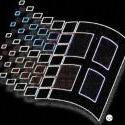sp193's Achievements
0
Reputation
-
Thanks for the suggestion. Yes, you're right to say that the HDD was connected while Windows 7 was being installed onto the SSD. Anyway, I tried doing as you suggested, but it still didn't work. Not even after I nuked the whole HDD and SSD, plus suffered the data loss that came from doing that. No matter how it was done, the Windows installation would fail to boot, once the HDD is connected to the computer. If I attempt to repair the installation's boot files with bootrec, it would report that no Windows installations are detected and so I can't do anything about it. So after numerous other failed attempts (some due to an insecure SATA cable) to get this setup working properly as it once did, I realized that perhaps the Windows 7 setup doesn't support UEFI properly. When my BIOS has legacy USB support disabled, then booting from a USB device (my USB CD/DVD drive in this case) will be used for only EFI applications. I didn't realize that there would be a difference because I last installed Windows 7 on this machine (and this configuration) in 2013. I came to that realization when every fresh installation would give an error 0xC0000225 on the first boot, until I manually select the SSD connected P0 to be booted via the non-EFI way (but strangely, it will work "properly" afterwards, until the HDD is connected). So after I enabled USB Legacy Support in the BIOS and booted the Windows 7 installer without UEFI support, it would make a proper Windows 7 installation that can work right. Thank you guys for your help!
-
My desktop computer has a Gigabyte GA-H77M-D3H mainboard, and has a dual-disk setup (1x SSD and one mechanical HDD). The SSD was its "system disk" (contains Windows and a few selected programs), while the mechanical disk contained my personal data and other programs. I took out the SSD because I originally wanted to use it to speed up my old laptop instead. As a result, I installed Windows 7 onto the HDD and took out the SSD. However, just a week ago when I was about to transplant the SSD into the laptop, it suffered a keyboard failure. So I never got to use the SSD in it. Today, I am attempting to re-install the SSD into my desktop computer, but it has not worked out. Windows 7 was successfully re-installed onto the SSD after it was formatted... but to my utmost horror, the new Windows 7 installation seems to be able to make its own decision on what "device 0" is. My BIOS shows that the SSD is correctly connected to SATA Port 0 and the HDD is now connected to SATA port 1. This was how the disks were originally connected. Just last week when the HDD was the only disk in the computer, it I connected it to port 0 in place of the SSD. Now the new Windows 7 installation on the SSD will insist on booting the old installation of Windows 7 on the HDD, even though the port number is no longer correct. After bootup into that old installation, the disk management will show the SSD as device 1, while the HDD as device 0. The only way that I can ever boot properly into the new installation, is by disabling SATA port 1 from the BIOS. But that isn't what I want because I want to be able to erase that old Windows installation on the HDD and to use it as my data disk again. The only time when it worked right, was when I eased the HDD with the diskpart utility's "clean" command, before recovering the partitions on it with Testdisk. The old Windows 7 partition's boot status was removed during that process. When that happened and it booted up correctly for one or two times, I then started to delete the old Windows system files from the HDD and rebooted once more... to find that the Windows 7 installation on the SSD is once again trying to boot from the HDD. :/ But now it fails to because most of the old system files are gone and so I am stuck in a never-ending boot loop instead of even getting to the old desktop. What was wrong to begin with? I don't know why Windows 7 is deciding on its own on what device 0 is. Neither do I know why is it always insisting booting that old OS that resides on a totally different disk, when it will boot itself correctly when its disk is the only one that is connected to the system... I tried playing around with the boot order in the BIOS. But regardless of what I select (device 0 or 1), the HDD is always booted. Is there a solution to this problem, without needing to format the HDD? I could format it, but now I have no idea how I am going to copy out the huge amout of data because I can't connect it to my PC. At worst, I could try to acquire a USB 2.0 enclosure to use for pulling out the data... but I would like to hear of a more intelligent solution, instead of jumping the gun and going with the nuclear option. Even after deleting everything that I can see (except for "Program Files (x86)" and "System Volume Information") with DIR /A, "BOOTREC /SCANOS" can still "see" the phantom Windows installation on the HDD ("D:\WINDOWS"). What gives?
-
Thanks guys! I would be glad to have even gotten that 0x0000007B stop screen though. It would be a good sign... I did get it once when downgrading my previous laptop to Windows XP though. Well... I have found a definite answer to my original question (After searching through a lot of maybe not-so-related topics!). I'm doomed to be forever stuck without the benefits of AHCI because: 1. My chipset is an ICH7 (Yes, the original/base ICH7!) 2. The ICH7 chipset does not support AHCI (According to Intel...) 3. The ICH7 chipset only runs in IDE mode. 4. The Intel RST doesn't support this configuration (It will refuse to install because of the unsupported chipset). In conclusion, the report given by the Intel Chipset Identification utility is indeed accurate.... but it just didn't state that the chipset didn't support AHCI! So I've learned that just because the chipset supported SATA doesn't mean that it supported AHCI, since the BIOS and/or chipset might not support it. Oh, and I just realized that there weren't any SATA drivers for my mainboard either. I thought that I had installed an older copy of the Intel RST drivers from ASUS, but I was mistaken. There's a similar case here, but the OP had a MSI mainboard instead: http://forums.ubi.com/eve/forums/a/tpc/f/49310655/m/9181050597 (Now, at least I don't feel as cheated as before...) @jaclaz: It seems like this BIOS has (quite) a few misnamed options. The options I've mentioned so far in this thread have nothing to do with AHCI, but with tweaking how the IDE emulation should work (E.g. how the SATA and PATA interfaces should be combined and appear to the loaded OS as a standard IDE controller setup)!
-
Thanks, but the only option that is similar to what you have suggested is the "ATA/IDE Configuration" control. According to the manual, setting that option to "Enhanced" will cause "all SATA devices to operate in SATA mode". The available options are "Disabled", ""Compatible" (Apparently meant to set up IDE emulation) and "Enhanced". The suboption to that control is "Enhanced Mode Support On". The manual says that it "sets Serial ATA, Parallel ATA or both as native mode". (But what does it mean by "native mode"?) The available options are "SATA", "PATA" and "SATA+PATA". I've tried all 3 of them already, and none of them seemed to get the controller out of IDE emulation mode. Currently, I've left these options at their defaults. ("ATA/IDE Configuration" is set to "Enhanced" and "Enhanced Mode Support On" is set to "SATA"). And as usual, the Intel Chipset Identification utility reports that the ICH7 chipset is still running in IDE emulation mode.... PS: What do you mean by "injecting the right driver"? Do you mean that a solution would be to inject a certain module from another BIOS into my system's BIOS? I hope not. You are right: The RST setup program won't allow that to happen. But I know that my mainboard supports SATA (And hence, the AHCI mode).
-
I have a ASUS P5KPL/EPU mainboard in a computer that is running a modified version of Windows XP SP3. It's BIOS is at the latest version (v404). I've recently only noticed that the HDD was set to transfer data at UDMA mode 5, despite the fact that the HDD is indeed a SATA HDD (Western Digital Caviar Green WD5000AADS). I'm unable to install the latest Intel Rapid Storage Technology drivers, as the installer keeps giving the "Your computer does not meet the minimum requirements" message. That happened, despite the fact that my mainboard does contain a supported chip (An ICH7 chip). The driver that is currently installed was from ASUS (Dated 05-Aug-09 lol...). Well, I'm still fine with living with old drivers (Which I'm sure that anyone of us who is computer literate won't do) if that error was caused by OEM hardware... but what truly irritated me was this: Further checking revealed that the ICH7 SATA controller has been operating in IDE emulation mode, but my BIOS doesn't seem to have an option to switch between AHCI/SATA and IDE modes. D: The Intel Chipset Identification utility reveals that the I/O controller is "Intel® 82801GB/GR I/O controller hub (ICH7/ICH7R) SATA Controller found in IDE mode". The device manager also shows the "classic" dual-IDE controller configuration like what my Pentium 3 had..... instead of having only one entry under the HDD controller category like most of the other modern systems I've come across. When I mentioned the "classic" dual-IDE controller configuration, this was what I saw: It's unusual, because there is only one ATA/IDE port on my mainboard, and my optical drive is connected to it. The HDD appears to be connected under the first "Primary IDE channel" and the optical drive appears to be connected to the lower "Primary IDE channel". The BIOS reports something like this at bootup too: "SATA 1: IDE HDD", followed by the HDD's data. So what does this mean? Is my mainboard another one of those ASUS mainboards that had it's AHCI/IDE mode option disabled? Am I doomed to be stuck without the benefits of the AHCI mode forever? (Will I miss out a lot anyway? I heard that I would only lose NCQ support) I heard that the ASUS P5K mainboard suffered from an issue like this because of some kind of licensing issue, and that a solution was to flash the mainboard with the BIOS meant for the P5KR.... which is out of the question for me as the P5KR has a rather different configuration from the ASUS P5KPL/EPU. EDIT: I should probably mention that my goal was to get this system to have updated SATA drivers, if possible. I care about that as the HDD seems to running a little slow compared to my ex-Pentium 3 (Which had a real IDE HDD that was about 5 years older and 5 times smaller lol...).
-
You're right about the cabinet files being spanned - but it's possible to extract the contents of each of the spanned cab files (Using the extract.exe or expand.exe utilities that come with Windows ME). 7-zip has been known to occasionally be unable to decompress some archives that it should have been able to decompress.
-
Sorry for letting the links expire - the files were actually still there on Mediafire, but the old links were somehow defunct. Anyways, the new links are uploaded at my blog, and the page at Geocities JAPAN will be updated soon. I've also mirrored the files at Sendspace too - in case Mediafire goes crazy and breaks my links again. Check out this post if you only want to see the post on the re-link and mirroring: http://ysai187.blogs.linkbucks.com/2010/12/15/sh95upd-v008-re-linked-and-mirrored/
-
You mean "live", of course, don't you? Oops.. Heh... staying up to 2am in the morning isn't good for me. @HardDriv'n: I think that you should upgrade to IE6 first, if you haven't done so yet.
-

Better Softwares for specific situations in Windows 98
sp193 replied to pichorra's topic in Windows 9x Member Projects
Probably not. I've been living with that issue since 2006. FF1x was slow compared to IE6... FF2x was worse... and FF3x refused to run on my machine regardless of whatever I tried (KernelEX didn't help... probably because my Windows 98 installation was too heavily modified, with IE stripped off). I used Windows Media Player 6.4 with FFDSHOW... but you could also use Media Player Classic. An old version of Microsoft Office with Microsoft's "Office 2007 compatibility pack". -
Did you update IE 5.0 to IE 6.0? This seems really much like his problem.... After all, Windows 98 came with IE 4.01 (Full of bugs), while Windows 98 SE came with IE 5.0 (Still buggy...). Thinking about this... the Windows 95 shell also had this problem (In the "Disk properties" dialog, the pie chart is always wrong if your disk is bigger than 2GB, and the reported free space is also incorrect if you're using EXPLORER.EXE v4.00.950)! Don't do that - unless you want to leave with the 2GB partition size limit (And with your problem unsolved)!
-
Are you using the Windows 95 shell?
-
Hi all... haven't been here for a long time. Just to let all of you know: Geocities Singapore was shut down last year... and I shifted to linkbucks. However, my ISP is blocking Linkbucks... so I've shifted yet again to Geocities JAPAN: http://ichiba.geocities.jp/ysai187 I may still occasionally update my Linkbucks blog... but I can't do it easily (I need to use a proxy server... but my ISP blocks links to proxy server lists ). I'll probably re-create my project pages again soon (And update all links again)... however, I can no longer continue developing (Or can't really help much at most) SH95UPD since my Windows 98 machine has finally been decomissioned this year.
-
Well, Windows ME has it's good features too - faster system bootup (In general), System Restore (OK, this one is questionable), WFP (Again, this may be questionable), supports higher RAM capacities, PnP device detection/driver installation is asynchronous (Doesn't pause your PC to install devices), native USB mass storage device support, better SCANDISK and DEFRAG utilities (They're both faster, and Windows ME's scandisk supports >137GB disks). On the downside... My Windows ME machine usually lasted me barely 3 months per format - during which, it'll slowly break down (Programs crashing, active desktop crashing because IE crashes very often, BSODs become rampant as the OS ages... etc). At the end of it's "lifespan" (Before I format), it's usually unbootable (Won't even get to the desktop). Of course, that was back in 2003-2004 - when ME was still a Microsoft-supported OS. Not to mention that some Windows 95 games CAN'T work properly on Windows ME (E.g. Red Alert for Windows 95). Neither does it have an accessible "MS-DOS mode" without modification. I had done a crazy experiment before - to strip ME of IE5.5, WFP and SR.... and it worked MUCH better than 98lite does (Faster bootup too). However, it's still larger in size.
-
I did something similar before - installing the Japan Edition of Windows 98SE on a Compaq Presario 2837AP (I think that it had an Intel 845 series chipset, but I can't remember which model exactly)... and it lags more than Windows XP (For no apparent reason). It had an older version of the ATI catalyst drivers installed (Mobility Radeon 9500 was claimed to be unsupported by ATI!), Intel Chipset driver... and Windows 2000's USB 2.0 drivers (From this site; It was from the thread about the USB 2.0 stack). Somehow I think that the lag is caused by some issue that Windows 98 has with the Intel 845 chipset...
-
Multicore/multiprocessor support in Windows 98 (The operating system, not the programs you run on it)?? I think that it was stated somewhere in this forum that this was impossible without re-writing a huge part of Windows 9x. Maybe I'm mistaken... it's been too long.




